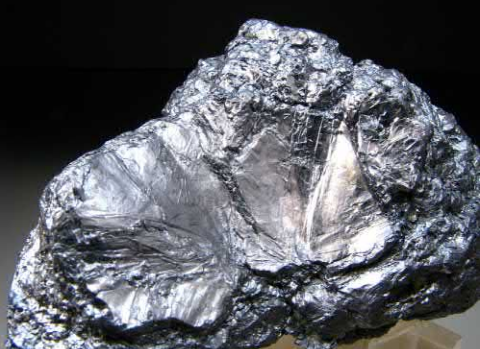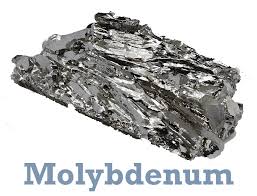General Properties of Molybdenum
Molybdenum [7439-98-7], chemical symbol Mo, atomic number 42, and relative atomic mass (i.e., atomic weight) 95.94(1), is the second element, along with chromium and tungsten, of group VIB(6) of Mendeleev’s periodic chart. The name of the element is derived from the Greek word molybdos, meaning lead, owing to the resemblance of the mineral molybdenite to lead.
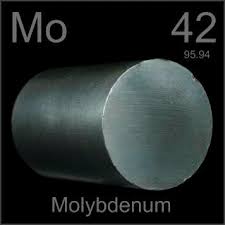
General Properties
Physical properties
Molybdenum is a hard, moderately dense (10,220 kg.m–3) refractory metal with a high melting point (m.p. 2621.85°C). Its freshly exposed surfaces are silvery white, but when tarnished the metal acquires a steel-gray color. It has a high Young’s modulus (325 GPa) and both exceptional strength and stiffness at high temperatures, but it is softer than tungsten. Moreover, molybdenum has a low coefficient of linear thermal expansion (5.43 μm/m.K), allowing it to be used for sealing hard glass. Molybdenum’s low electrical resistivity (5.7 μΩ.cm), combined with its high melting point, makes it suitable for producing electrical contacts.
Corrosion resistance
Molybdenum has a good corrosion resistance in strong mineral acids but vigorously dissolves in a hydrofluoric and nitric acid mixture (i.e., hydrofluoric aqua regia, HF-HNO3). Molybdenum is resistant to alkaline aqueous solutions but readily dissolves in molten caustic alkali hydroxides (e.g., NaOH and KOH), molten alkali carbonates (e.g., Na2CO3 and K2CO3), and molten alkali nitrates (e.g., NaNO3 and KNO3). The metal is also inert in gases such as carbon monoxide, hydrogen, ammonia, and nitrogen at temperatures up to 1095°C. Molybdenum oxidizes only at high temperatures, which makes it suitable for use as a thermal shield in air at high temperatures.
Moreover, molybdenum is highly corrosion resistant to halogens such as iodine, bromine, and chlorine vapors. Molybdenum and its alloys are also suitable container materials for handling strongly corrosive liquid metals such as molten alkali metals (e.g., Li, Na, and K) and also bismuth and magnesium, while pure molybdenum is strongly attacked by molten tin, aluminum, and cobalt. Actually molybdenum, along with rhenium, is the most resistant pure metal to oxygen-free molten lithium up to 1200°C.
Biochemical properties
In biological systems, molybdenum is an essential constituent of enzymes that catalyze redox reactions, e.g., oxidation of aldehydes, xanthine, and other purines, and reduction of nitrate and molecular nitrogen. The biochemical importance of molybdenum is due to two main factors: its various oxidation states, which provide easy and various electron-transfer pathways, and its ability to form strong bonds with oxygen, sulfur, and nitrogen donors, which allows both the existence of stable complexes with a straightforward ligand exchange reaction and changes in molybdenum’s coordination number.
You may like
Related articles And Qustion
See also
Lastest Price from Molybdenum manufacturers
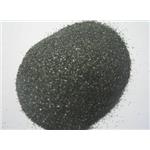
US $3.60/kg2025-04-18
- CAS:
- 7439-98-7
- Min. Order:
- 1kg
- Purity:
- ≥99%
- Supply Ability:
- 3000tons/month
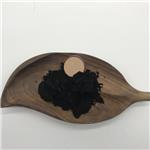
US $0.00/KG2025-04-15
- CAS:
- 7439-98-7
- Min. Order:
- 1KG
- Purity:
- 99%
- Supply Ability:
- 500000kg

